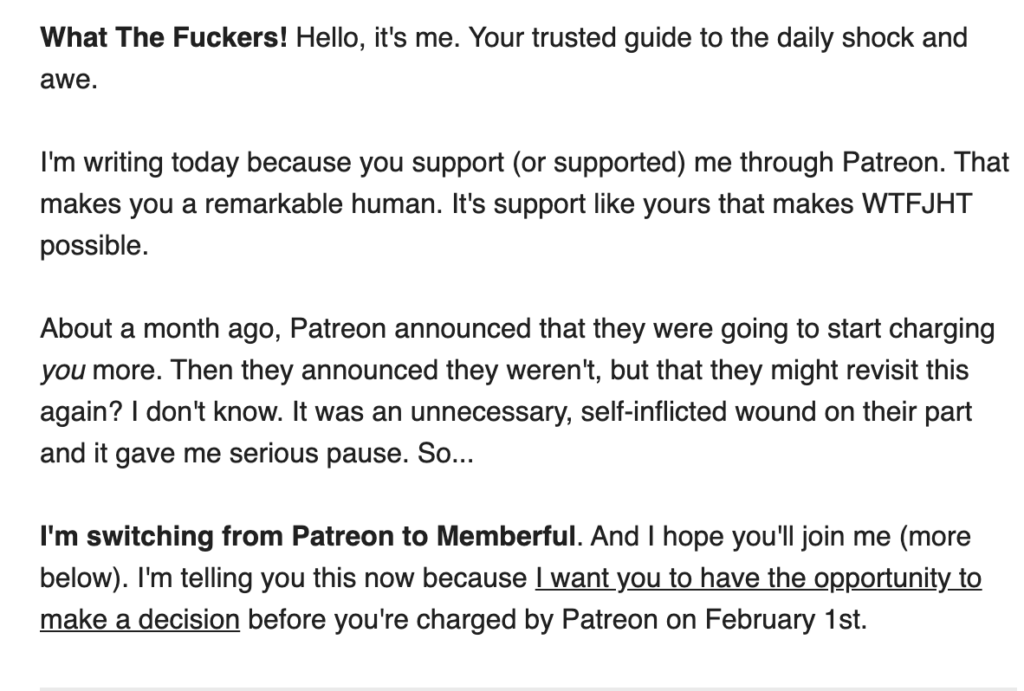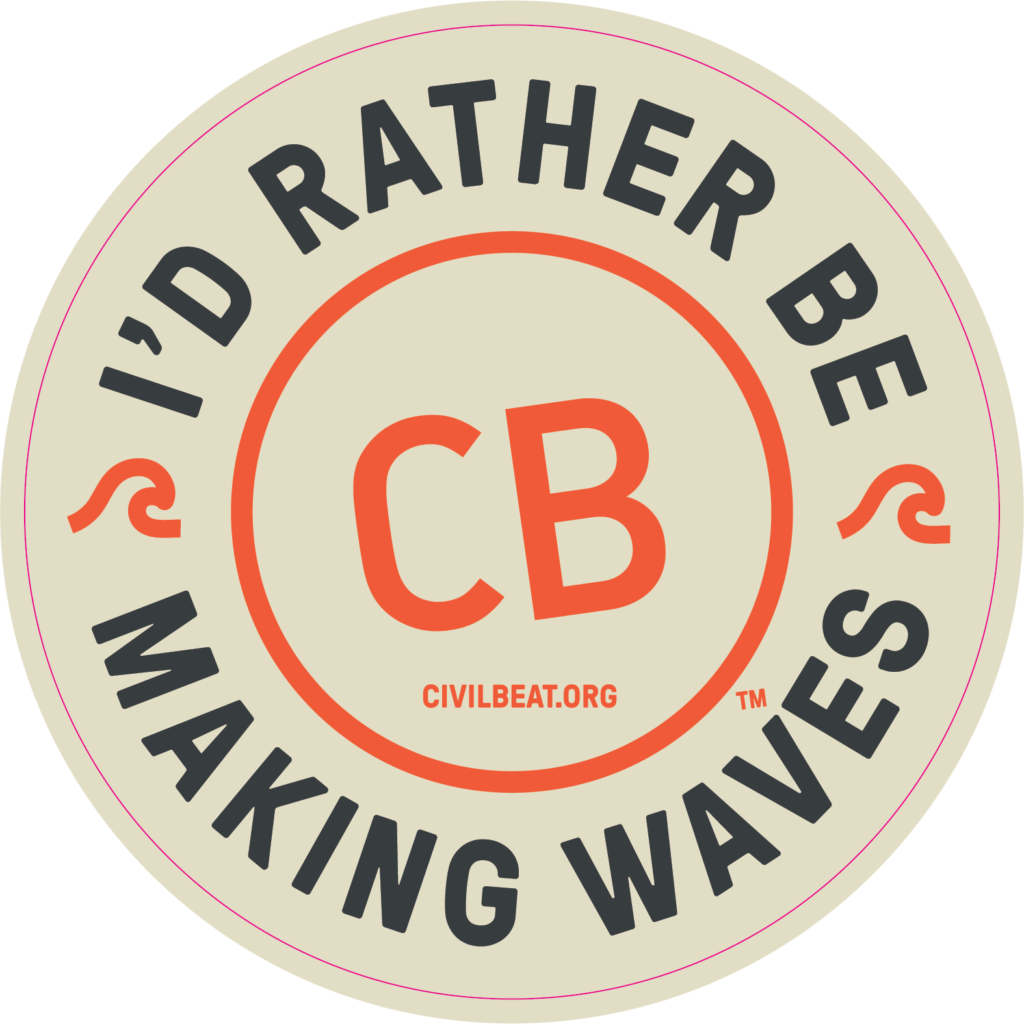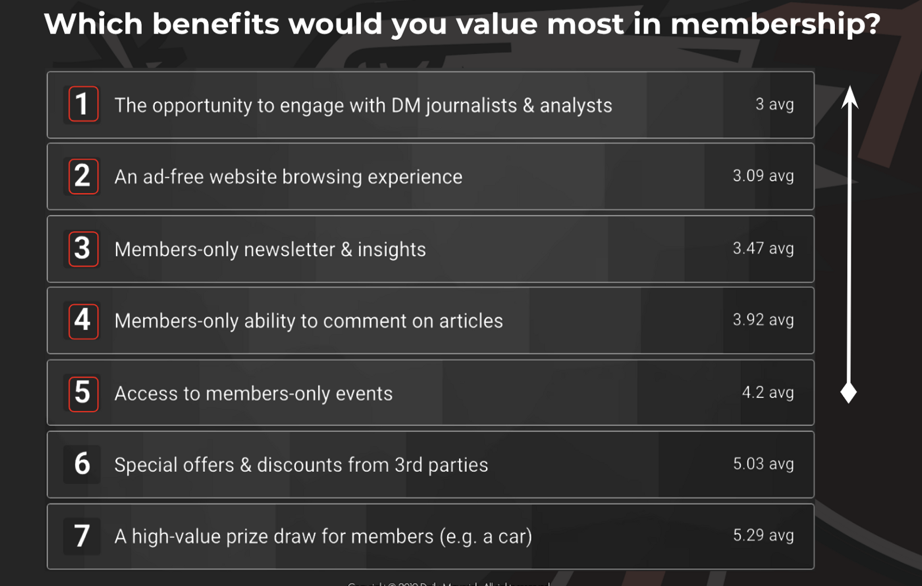Newsroom overview
A digital magazine based in Berlin that focuses on explanatory journalism and collaborations with readers
Berlin, Germany
2014
2015
474,755
13,676
86 percent
Krautreporter launched in 2014 with a bang. It raised $1.38 million from 17,000 individuals via a crowdfunding campaign. They considered those supporters its first members.
But after that exciting launch came reality: In order for its business to succeed, Krautreporter needed to keep those supporters for a second year – but it lost 70 percent of them when that time came around. The team chalked that up to two things: not asking crowdfunding contributors to become recurring members from the start, and a gap between what crowdfund supporters thought Krautreporter would be and what they got once it started publishing.
“That turned out to be a big problem one year later… we had to come up with a new value proposition, and that’s the one that works for us [now],” said Sebastian Esser, the founding publisher who now leads the membership platform Steady.
In its second year, Krautreporter revamped its strategy to prioritize retention over growth, introducing a paywall and refining its focus on engagement. It’s continued to make retention a priority since by adding features to encourage sharing, and prioritizing annual renewals.
Today, the organization has 13,676 members and a rolling annual retention rate of 54.8 percent.
Why this is important
It is less labor intensive and more cost effective to retain members than to gain new ones – and the longer someone is a member, the more value they bring as a financial contributor and brand ambassador.
This is especially true at organizations like Krautreporter that provide a distinct news experience. But when you offer something a bit different than people are used to, you also have to be incredibly clear about your value proposition. That gap between expectations and reality can make retention a challenge, especially in a newsroom’s first year.
“Some of the things we’ve been doing in the membership with regards to community work and engagement are not things that people are used to if they have a subscription to The New York Times or the German newspaper Der Spiegel,” said Krautreporter publisher Leon Fryszer. “You expect a transactional (approach) — money for text. We don’t know what to expect if suddenly we have this community driven journalism approach where we engage you in our reporting. Fundamentally, that is not something they know what it means. We always say that engagement doesn’t sell because people don’t know what it is.”
What they did
As Krautreporter entered its second year, 70 percent of its initial supporters chose not to sign on as members.
Some of that was because members who joined through the crowdfunding campaign only made one-time contribution. Without automated recurring payments in place, one of the most foundational ways to support retention, Krautreporter struggled to encourage renewals.
They also had a hard time telling their story.
“People weren’t really sure what we were. They could tell we were different, but before us telling them and being very explicit about this is what we do and this is what you get, they were a little bit confused. Just putting our stories out there in the different formats didn’t explain what we do,” Esser said.
As Krautreporter moved through its second year — and beyond — it made a couple key changes to improve its retention:
- It refined its value proposition so there was less of a chance of new members canceling because of misplaced expectations
- It introduced a paywall and a benefit that allowed members to share their membership with others
- It studied the link between survey participation and retention (surveys are at the core of Krautreporter’s engagement model)
- It made annual payments the default membership option and implemented small nudges to incentivize people to renew annually
Krautreporter began to emphasize the explainer nature of its coverage. It doesn’t publish a ton of stories, instead focusing on helping its members better make sense of the world. The team worked on making that value proposition clear to both members and potential members.
Krautreporter also introduced its paywall, as well as a shared login benefit that allows members to extend their membership to others. “I don’t think we would have survived without adding that paywall,” Esser said.
The paywall is key to that because it is what makes the membership sharing benefit viable, and Krautreporter learned through user research that members are less likely to cancel if they know that others are dependent on them for access. (This is also one of the reasons that Netflix has not worked hard to crack down on password sharing.)
Krautreporter was heavily invested in surveying its audience members regularly from the beginning, but it wasn’t until the second year that the team began paying close attention to how participation affected retention. Krautrerporter learned that on average, readers who participate in at least one survey remain members for roughly four months longer than a non-survey taker.
Krautreporter also decided to prioritize annual memberships after realizing that many of their monthly members joined just to read a specific article or articles and soon canceled. They did so by making annual the default option — with increasing price tiers that allow for members to add additional accounts. Krautreporter offers monthly subscriptions, but users need to take an extra click to sign up for them and they cost more over the course of a year.

In recent months Krautreporter has also introduced new email newsletters and other features, such as categorizing articles by length and telling readers how long it’ll take them to finish a story. They launched these time management features after hearing through audience research that members found Krautreporter “time expensive.”
“By giving Krautreporter some money in 2014 meant you’re on the team of the progressive journalism crowd,” Esser said. “So I mean, that makes you feel better. Also, it’s a statement to your community… But it’s completely different today. I mean, we had to build a product that works. But now people have no idea that we are crowdfunded and what the backstory is and all that. Actually, we start telling people now because we can’t take it for granted that they know this stuff.”
The results
Encouraging annual recurring payments has helped. Sixty percent of its new annual members stay on for the second year, but retention among monthly members only reaches 60 percent retention after their third month of membership. In others words, a significant portion drop off after only a couple months. (This is one of the challenges that organizations with paywalls face – sometimes people pay to be able to access a set of stories for a certain period of time.)
“The conclusion from this was that, of course, for us business-wise it makes sense for us to make annual memberships cheaper, but it’s also a fair move to tell people that we see this is a long-term commitment for you, and you’ll be [spending] more money with us anyway, so we make the annual memberships cheaper because it’s a commitment on your side,” Fryszer said.
The membership renewals — both annual and monthly — are processed through Steady, the membership platform that Krautreporter founder Esser co-founded, and which it uses for the business end of membership. And they are automatically renewed, which is essential for retention. Members are also reminded that their membership is going to renew just before they are charged again.
“That’s one of the key things to keep in mind when you start off with membership: You want that long-term commitment in the sense of automatic renewal from the start,” Fryszer said. “What you don’t really want to happen is that a year later you have to ask everyone for their credit card again because that’s basically another crowdfunding, and that’s probably going to break your neck.”
What they learned
Doing something new requires a lot of explanation. It takes time for members to fully understand what they’re getting from Krautreporter and its engagement-heavy style of journalism. That’s one of the reasons why the site prefers annual memberships — it affords it the opportunity to introduce readers to its surveys and its journalism.
“Annual membership gives yourself more time to actually show them the work that you do,” Fryszer said. “Frankly, people probably won’t engage with the first things that you do. After a while, they’ll realize how things work…The longer you’re a member, the more likely you are to at some point see something that you’re super interested in and to pick up the engagement offers that we give you. I think that’s also why you want to give yourself some time with a membership model.”
Onboarding helps with that. One way Krautreporter has tried to nudge members along is via a four-email onboarding series that introduces them to its survey-based engagement strategy, asks members to share information such as their expertise, and more.
Retention starts early. Krautreporter offers non-members some articles and surveys for free so readers can sample its approach to engagement. This helps the site identify potential candidates for membership. “It filters out people who are not engaged and would not stay on longer,” said Fryszer.
Time is money. The most common reason Krautreporter members cancel their membership is because they say they don’t have enough time. Fryszer said that feedback has made the site realize that it needs to give members more structure to help them fit Krautreporter’s journalism into their lives.
It already started adjusting with new features mentioned above, including telling readers how long it will take them to read a story and another feature that is still under development that groups stories by length. Krautreporter also plans to develop new products that are more finite and give readers an experience they can finish and feel caught up to the news.
Key takeaways and cautionary notes
Showing what you’re about is hard work, especially in the beginning. Newsrooms need to be regularly reminding members of the value proposition they’re offering their audiences. This is especially important upon launching from scratch, when readers will have all sorts of preconceptions about what the newsroom is offering.
“Disappointing lots of people along the way, is probably the most stressful phase of my life,” Esser said. “And I never want to do it again. But you should definitely be aware when you start something like that, that this is coming your way. Because it happens to every project that I know that starts from zero. You first have to find out within your team and you know, coworkers and all that, what you actually want to do. And then of course, you need a business model and an audience and members while you do that.. And that creates all kinds of misunderstandings, disappointments, and membership is always emotional, it’s about relationships. For me, that created a lot of stress.”
Pay attention to why your readers are canceling. Krautreporter was able to identify two common reasons and it came up with potential solutions to both. The first, that many people who joined monthly did so to access a specific article, they attempted to address by making annual memberships more valuable and making them the default.
The second, that engaging with Krautreporter was too time consuming, they are focusing now on providing products that are finishable and don’t take as long to read.
Consider taking advantage of canceling members’ attention one last time by including a one-sentence survey on your cancellation page asking why they are canceling, or following up personally. Keep track of the answers you receive, and think about how you can make changes that could solve some of those pain points.
Disclosure: Membership Puzzle Project supported a separate Krautreporter project in 2019 through the Membership in News Fund.
Other resources
- Krautreporter and European Journalism Centre, research report: Engaged Journalism Playbook
- Nieman Lab, article: Five years after crowdfunding, here’s how Krautreporter is keeping its members engaged (and building tools for you to, too)
- Twipe Publishing, article: Monetizing password sharing: what publishers can learn from Netflix





